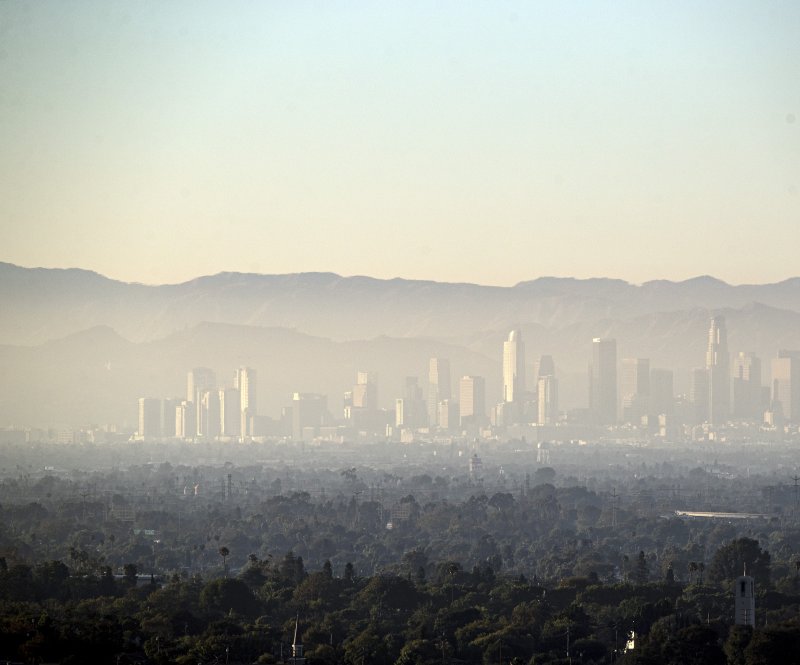New research suggests that particulate matter in wildfire smoke is more dangerous to human health than particles found in other types of air pollution. File Photo by Etienne Laurent/EPA-EFE
March 5 (UPI) -- The fine particles in wildfire smoke are up to 10 times more harmful to human lungs than pollution from other sources, such as car exhaust, an analysis published Friday by the journal Nature Communications found.
Every 10 microgram-per-cubic meter increase in particulate matter -- the hazardous microscopic particles found in dust, pollen, smoke and soot, car exhaust and industrial emissions -- led to a 1% rise in hospital admissions for breathing problems, the data showed.
Higher levels of particulate matter in wildfire smoke, however, resulted in a 1.3% to 10% increase in hospitalizations for respiratory issues.
The findings are based on an analysis of air pollution from wildfires and other sources in Southern California between 1999 and 2012. The region has continued to be plagued by wildfires, due at least in part to a long-standing drought.
"As conditions in Southern California become hotter and drier, we expect to see increased wildfire activity," study co-author Tom Corringham said in a press release.
"This study demonstrates that the harm due to wildfire smoke may be greater than previously thought, bolstering the argument for early wildfire detection systems and efforts to mitigate climate change," Corringham said.
He is a post-doctoral scholar in climate, atmospheric science and physical oceanography at the Scripps Institute in San Diego.
In Southern California, the Santa Ana winds drive the most severe wildfires and tend to blow smoke toward populated coastal regions, according to the researchers.
Climate change has led to delays in the start of the region's rainy season in recent years, and that pushes wildfire season closer to the peak of the Santa Ana winds in early winter, the researchers said.
In addition, as populations grow and spread into previously undeveloped areas, the risks of "ignitions and impacts" of wildfire and smoke increase for those who live inland and downwind.
Particulate matter, or PM2.5, are the tiny airborne particles with diameters of up to 2.5 microns, about 1/20th that of a human hair, which are the main component of wildfire smoke and other forms of air pollution.
These fine particles can penetrate the human respiratory tract, enter the bloodstream and impair vital organs.
To isolate wildfire-produced PM2.5 from particulate matter in other pollution sources, the researchers defined people susceptible to wildfire exposure as those living in areas with strong Santa Ana winds and fire upwind.
They also used smoke plume data from National Oceanic and Atmospheric Administration's Hazard Mapping System.
Every 10 microgram-per-cubic meter increase in PM2.5 attributed to sources other than wildfire smoke increased respiratory-related hospital admissions by 1%, the data showed.
However, the same increase, when attributed to wildfire smoke, caused a 1.3% to 10% increase in hospital admissions related to breathing problems.
Although no consensus exists as to why wildfire PM2.5 is more harmful to humans than other sources of particulate pollution, the researchers said the findings should push regulators to reconsider standards for acceptable levels of PM2.5.
"There is a daily threshold for the amount of PM2.5 in the air that is considered acceptable by the county and the Environmental Protection Agency," study co-author Rosana Aguilera said.
"The problem with this standard is that it doesn't account for different sources of emission of PM2.5," said Aguilera, who also is a post-doctoral fellow at Scripps.















